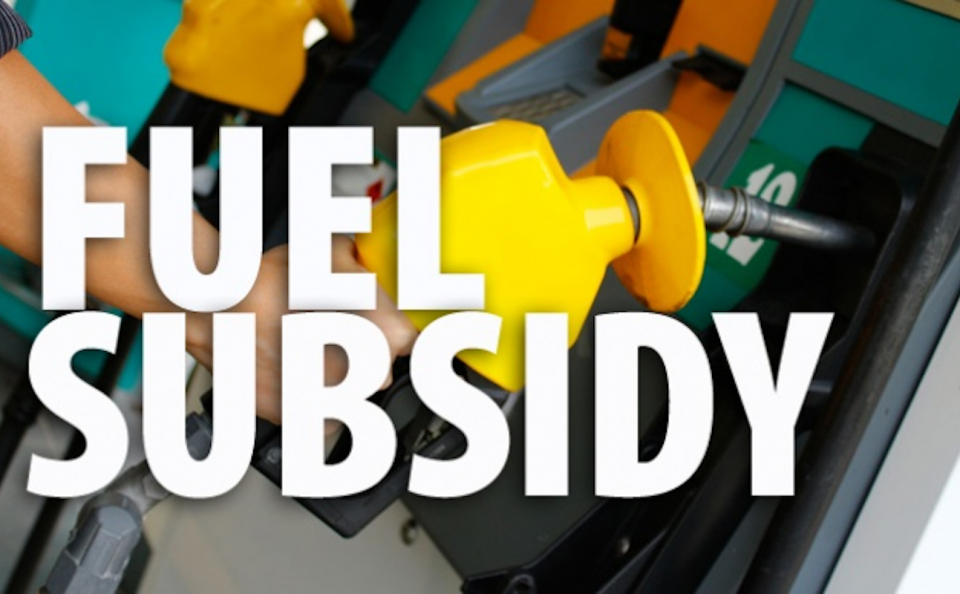After subsidy removal, Nigeria slashes petrol consumption by 18.6m Litres, gobbles 1.5bn litres in June
Following the removal of petrol subsidy, daily nationwide utilisation of the product declined from 68.9 million litres in May 2023 to 66.9 million litres daily in June 2023, indicating a decline of 18.6 million litres.
A THISDAY analysis of data from the Nigerian Midstream and Downstream Petroleum Regulatory Authority (NMDPRA), showed that in all, Nigeria ‘consumed’ an estimated 1.5 billion litres of petrol in June.
While before the removal of subsidy, Nigerians were believed to be using 66.8 million litres, but with the withdrawal of what the government terms under-recovery, the review showed that the figure may have fallen to 50 million litres in June.
Although the country still does not know the exact volume of the product consumed by Nigerians daily, however it bases its estimates on the number or truck-out or loading by tankers in the various petrol depots.
Last year, NMDPRA put the country’s petrol use at 66.8 million litres of petrol daily, while the Nigerian National Petroleum Company Limited (NNPC) pegged it at about 68 million daily.
But the Nigeria Customs Service (NCS) said at the time that the NNPC released 98 million litres daily even when it previously claimed the country consumed 60 million litres of petrol per day.
On May 29, Nigeria’s new President, Bola Tinubu, announced the removal of the largely wasteful payment to lower the pump price of the product, maintaining that the subsidy management system was largely corruption-ridden and that the country was essentially subsidising neighbouring countries.
The varying figures provided by different agencies of government had left many Nigerians concerned by the transparency of the management of the government’s fuel subsidy programme.
But a THISDAY review showed that the daily consumption (truck-out) varied from as low as 470,000 litres to as high as 78.8 million litres on a daily basis during the month of June under review.
In addition, Nigerians consumed roughly 50 million litres of petrol, the analysis showed, as opposed to the 66.8 previously said to have been used by Nigerians per day before the subsidy removal.
Without discounting the direct impact the subsidy is having, many motorists and other users have also stayed away from filling stations to patronise the public transport system or buy the fuel in small amounts which may have also affected consumption.
While the industry regulator and the NNPC have not come out with a comprehensive statement on the impact of the fuel subsidy on local consumption as well as on surrounding nations, the petrol racketeering markets in some West African nations, including Cameroon, Benin Republic and Togo had recently crashed, following the decision.
For instance, there have been reports that on the roadsides of the impacted countries, cheap contraband petrol from Nigeria had abruptly doubled in price, destabilising an informal sector that is central to the region’s economic activity.
Also, since Nigeria scrapped its fuel subsidy, black market fuel vendors and commercial drivers in Cameroon, Benin and Togo who were heavily reliant on petrol smuggled from Nigeria have seen their businesses collapse. And with supplies dwindling, queues have been forming at official petrol stations, where fuel is now competitively priced.
A litre of petrol on the black market which used to sell for about 300 CFA francs ($0.48) is now reported to be selling for a minimum is 600 CFA francs in some neighbouring nations, while regular filling stations have seen their business activities increase due to the collapse of the black market.
The NMDPRA review indicated that from June 1 to 5 Nigerians ‘consumed’ 36.8, 48.3,42.5,12.6 and 54.5 million litres of petrol respectively, while between June 6 and 10, the quantity consumed was 60.4, 68.9, 56.5,71.5 and 50.1 million litres of the product respectively.
On June 11, 470,000 litres of fuel left the depots, 19.0 million the next day, 57.7 million litres on June 13; 67.3 million litres on June 14 and 63.9 million litres on June 15.
June 15 to 23, saw the truck-out numbers as 74.2; 51.0; 15.1; 71.5; 78.8; 72.1; 68.5; 69.4 while the consumption figure for June 24 was conspicuously missing, but was estimated to be 60 million litres, since most of the consumption at the time hovered around the same number.
Between June 25 and June 30, the NMDPRA data reported that Nigerians used the following litres: 10.5; 57.9; 63.3; 17.0; 15.7 and 68.3 million litres per day respectively.
However, Pinnacle-Lekki consistently had the highest number of truck-outs, while Lagos was mostly the state supplied with the highest volume of petrol during the period under consideration.
Petrol in Nigeria currently sells for between N488 and N600 depending on the location of the buyer. The Dangote refinery billed to commence production between this July and August, if it comes to fruition, is expected to significantly reduce importation of the product and marginally reduce pump prices in Nigeria.
This is based on the reasoning that international shipping, freight, customs and other charges will be eliminated while the jostle for dollars may significantly slump.




